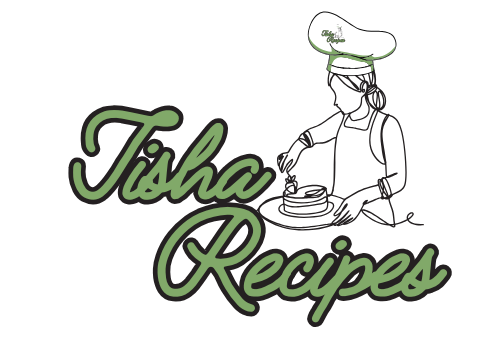
Eggplant Parmesan, known as Parmigiana di Melanzane in Italian, is one of the most beloved comfort foods in the world. This dish combines crispy slices of breaded eggplant layered with rich tomato sauce and gooey melted cheese, resulting in a hearty and satisfying meal. Whether you’re an experienced home cook or a beginner in the kitchen, mastering this dish can elevate your culinary skills and bring a taste of Italy to your table.
Introduction to Eggplant Parmesan
Eggplant Parmesan is more than just a meal—it’s a celebration of Italian culinary tradition. The dish originates from Southern Italy, where eggplants are abundant and widely used in various recipes. By layering slices of fried eggplant with marinara sauce, Parmesan, and mozzarella, the dish achieves a perfect balance of textures and flavors: crispy yet tender eggplant, tangy sauce, and creamy cheese.
Although its exact origin is debated, many credit Sicily or Campania with creating this iconic dish. Today, Eggplant Parmesan is a favorite in both Italian homes and restaurants worldwide, often adapted to suit local tastes and dietary preferences.
Brief History and Cultural Significance
The roots of Eggplant Parmesan lie in the Mediterranean, where eggplants were introduced by Arab traders. The vegetable became a staple in Southern Italy, particularly in Sicily, Calabria, and Campania. Early versions of the dish likely consisted of eggplant slices baked with cheese and a simple sauce. Over time, the dish evolved to include frying the eggplant and adding layers of sauce and cheese.
In Italian-American cuisine, Eggplant Parmesan has become a symbol of comfort and nostalgia. It’s a dish that brings families together and evokes memories of home-cooked meals. The cultural significance extends beyond the plate—it represents a blend of simplicity and elegance that defines Italian cooking.
Preparing Eggplant Parmesan
Choosing the Right Eggplant
The foundation of a great Eggplant Parmesan is the eggplant itself. Selecting the right type ensures the best flavor and texture.
- Size and Shape: Opt for medium-sized eggplants with smooth, shiny skin. Avoid overly large ones, as they can be bitter and have too many seeds.
- Freshness: Look for firm eggplants with a bright green stem. Soft spots or discoloration indicate over-ripeness.
Essential Tools and Equipment
Having the right tools can make preparation smoother and more enjoyable:
- Mandoline Slicer: For evenly sliced eggplants.
- Mixing Bowls: Essential for the breading station and mixing ingredients.
- Large Skillet: Ideal for frying eggplant slices to golden perfection.
- Baking Dish: A 9×13-inch dish works well for layering and baking.
- Sharp Knife: For slicing vegetables and cheeses.
- Parchment Paper: Helps prevent sticking during baking.
Ingredients
Main Ingredients
- Eggplants (2–3 medium): The star of the dish, providing a meaty, satisfying texture.
- Flour (1 cup): Creates a base layer for breading.
- Eggs (3, beaten): Acts as a binder for the breadcrumbs.
- Breadcrumbs (2 cups): Provides the signature crispiness.
- Parmesan Cheese (1½ cups, grated): Adds rich, nutty flavor.
- Mozzarella Cheese (2 cups, shredded): Melts into creamy perfection during baking.
- Marinara Sauce (2 cups): Enhances the dish with tangy, robust flavors.
- Olive Oil (½ cup): For frying the eggplant slices.
Optional Ingredients
- Fresh Basil Leaves: Adds a fragrant and fresh garnish.
- Garlic Powder (1 tsp): For extra flavor in the breadcrumbs.
- Red Pepper Flakes: Adds a subtle spicy kick.
Step-by-Step Instructions
1. Preparing the Eggplant
- Slice the Eggplant: Cut into ¼-inch thick rounds for even cooking.
- Salt and Drain: Sprinkle the slices with salt and place them on paper towels. Let them sit for 20–30 minutes to draw out moisture and bitterness. Pat dry with a clean towel.
2. Setting Up the Breading Station
- Prepare three bowls:
- Bowl 1: All-purpose flour.
- Bowl 2: Beaten eggs.
- Bowl 3: Seasoned breadcrumbs (mix breadcrumbs with grated Parmesan, garlic powder, and herbs).
- Dredge each eggplant slice in flour, dip it into the beaten eggs, and coat it with breadcrumbs.
3. Cooking the Eggplant
- Frying Method: Heat olive oil in a skillet over medium heat. Fry the breaded eggplant slices in batches, cooking for 2–3 minutes per side until golden brown. Drain on paper towels to remove excess oil.
- Baking Alternative: Arrange the breaded slices on a baking sheet lined with parchment paper. Spray with olive oil and bake at 375°F for 15–20 minutes, flipping halfway through.
4. Assembling the Dish
- Spread a thin layer of marinara sauce on the bottom of a baking dish.
- Arrange a single layer of eggplant slices over the sauce.
- Sprinkle Parmesan cheese and mozzarella over the eggplant.
- Repeat the layering process until all ingredients are used, finishing with a generous layer of cheese on top.
5. Baking the Eggplant Parmesan
- Cover the dish with aluminum foil and bake at 375°F for 20 minutes.
- Remove the foil and bake for an additional 15 minutes, or until the cheese is bubbly and golden.
6. Serving the Dish
- Let the Eggplant Parmesan rest for 10 minutes before serving to allow the layers to set.
- Garnish with fresh basil leaves and serve with crusty bread or a crisp salad.
Accompaniments, Nutritional Insights, and Common Mistakes
Eggplant Parmesan is a dish that can stand on its own or be paired with complementary sides to elevate the dining experience. In this section, we’ll explore ideal accompaniments, delve into the nutritional benefits of Eggplant Parmesan, and uncover common mistakes to avoid when making this classic dish.
Perfect Side Dishes for Eggplant Parmesan
While Eggplant Parmesan is hearty and satisfying, pairing it with the right sides can enhance its flavors and create a more complete meal. Here are some of the best accompaniments:
1. Garlic Bread
Crispy, buttery garlic bread is a classic side for any Italian dish. The crunchy exterior and savory garlic butter complement the soft, cheesy layers of Eggplant Parmesan.
Tip: For a twist, try adding a sprinkle of Parmesan cheese and parsley to the bread before baking.
2. Caesar Salad
The crispness of romaine lettuce, the tangy dressing, and the crunch of croutons make Caesar salad an excellent contrast to the rich and creamy Eggplant Parmesan.
Variation: Add grilled chicken or shrimp to the salad for a protein-packed side.
3. Pasta Marinara
Simple spaghetti or penne tossed in marinara sauce pairs beautifully with Eggplant Parmesan. The extra sauce ties the flavors together and ensures no cheese or breadcrumbs go to waste.
Pro Tip: Use the same marinara sauce for the pasta and the Eggplant Parmesan for consistency.
4. Minestrone Soup
A warm bowl of minestrone soup, filled with vegetables, beans, and pasta, is a comforting addition to the meal. Its light yet hearty nature balances the richness of Eggplant Parmesan.
Serving Idea: Serve the soup as an appetizer to whet the appetite before the main course.
5. Roasted Vegetables
Roasted vegetables like zucchini, bell peppers, and mushrooms add a smoky flavor and a healthy touch to your meal. The caramelized edges provide a delightful contrast to the soft layers of the Eggplant Parmesan.
Tip: Toss the vegetables with olive oil, garlic, and Italian herbs before roasting.
6. Antipasto Platter
A variety of cured meats, cheeses, olives, and marinated vegetables can create an elegant appetizer or side dish. The salty, briny flavors of the antipasto balance the creamy and tangy notes of the Eggplant Parmesan.
Pairing Tip: Include prosciutto, salami, artichoke hearts, and roasted red peppers for a diverse platter.
7. Caprese Salad
This simple salad of fresh mozzarella, ripe tomatoes, basil, and a drizzle of balsamic glaze is light and refreshing. Its simplicity highlights the complex flavors of the Eggplant Parmesan.
Pro Tip: Use high-quality balsamic vinegar for the best results.
8. Risotto alla Milanese
Creamy saffron-infused risotto adds a luxurious touch to the meal. Its velvety texture and subtle flavor provide a perfect complement to the bold, hearty Eggplant Parmesan.
Serving Idea: Garnish the risotto with a sprinkle of Parmesan cheese and fresh parsley.
Nutritional Insights and Dietary Options
Eggplant Parmesan, while indulgent, can also provide significant nutritional benefits when prepared thoughtfully.
Health Benefits of Eggplant Parmesan
1. Eggplant
- Rich in Antioxidants: Eggplant contains nasunin, a powerful antioxidant that supports brain health.
- High in Fiber: Promotes healthy digestion and helps maintain satiety.
- Low in Calories: A great vegetable for those monitoring calorie intake.
2. Tomato Sauce
- Rich in Lycopene: A powerful antioxidant linked to reduced risk of heart disease.
- Vitamin C Source: Supports immune health.
3. Cheese
- Calcium-Rich: Essential for strong bones and teeth.
- Protein-Packed: Supports muscle repair and growth.
Dietary Modifications
Eggplant Parmesan is versatile and can be adapted for various dietary preferences:
- Gluten-Free: Use gluten-free breadcrumbs for breading.
- Vegan: Replace cheese with dairy-free alternatives like cashew cheese or nutritional yeast. Use a flaxseed “egg” as a binder.
- Low-Sodium: Opt for reduced-sodium marinara sauce and limit added salt.
Common Mistakes and How to Avoid Them
Even the most experienced cooks can encounter challenges when making Eggplant Parmesan. Here are some common mistakes and solutions:
Mistake 1: Soggy Eggplant
Problem: Eggplant slices become mushy during cooking, ruining the dish’s texture.
Solution:
- Always salt the eggplant slices and let them drain for 20–30 minutes to draw out moisture.
- Pat the slices dry before breading.
- Avoid overcrowding the pan when frying; this ensures even cooking.
Mistake 2: Watery Layers
Problem: The dish becomes watery during baking due to excess liquid in the sauce or eggplant.
Solution:
- Use a thick marinara sauce to minimize added moisture.
- After frying, place the eggplant slices on paper towels to absorb any residual oil.
- Bake uncovered during the last few minutes to evaporate excess liquid.
Mistake 3: Overcooked Cheese
Problem: Cheese on top burns or becomes rubbery.
Solution:
- Add the final layer of cheese during the last 10 minutes of baking.
- Cover the dish with foil during the initial bake to protect the cheese.
Mistake 4: Bland Flavor
Problem: The dish lacks depth of flavor.
Solution:
- Season every layer, including the flour, breadcrumbs, and sauce.
- Use high-quality Parmesan cheese for a rich, nutty flavor.
Mistake 5: Uneven Cooking
Problem: Some slices of eggplant are undercooked while others are overcooked.
Solution:
- Ensure all eggplant slices are cut to a consistent thickness (about ¼ inch).
- Rotate the baking dish halfway through cooking for even heat distribution.
Tips, Notes, Storing, Reheating, and FAQs
Eggplant Parmesan is a versatile and rewarding dish that can be prepared ahead, stored, and reheated while maintaining its delicious flavors and textures. In this section, we’ll cover expert tips to perfect the dish, best practices for storing and reheating leftovers, and answers to frequently asked questions about Eggplant Parmesan.
Expert Tips and Notes
1. Choosing the Right Eggplant
- Size Matters: Medium-sized eggplants are ideal. They’re less likely to be bitter compared to larger ones.
- Freshness is Key: Select firm eggplants with smooth, shiny skin and a vibrant green stem.
2. Proper Salting Technique
Salting the eggplant is one of the most important steps to ensure a flavorful and non-soggy dish.
- Why Salt Eggplant? It draws out excess moisture and reduces bitterness.
- How to Salt: Sprinkle slices generously with salt, layer them on a tray, and let sit for 20–30 minutes. Rinse and pat dry with a clean towel.
3. Perfecting the Breading Process
- Use separate bowls for flour, egg wash, and breadcrumbs to create an efficient breading station.
- Press breadcrumbs firmly onto each slice to ensure an even coating that won’t fall off during frying.
- Enhance the breadcrumb mixture with grated Parmesan, garlic powder, and Italian seasoning for extra flavor.
4. Cooking Methods
- Frying: Yields the crispiest texture. Use a neutral oil like canola or vegetable oil, and maintain a steady temperature to avoid greasy results.
- Baking: A lighter alternative. Spray breaded slices with olive oil and bake on a parchment-lined sheet at 375°F until golden brown.
- Air Frying: For a crisp texture with less oil, air fry breaded slices at 375°F for 8–10 minutes.
5. Layering Techniques
Proper layering is crucial for a balanced and flavorful Eggplant Parmesan:
- Start with a thin layer of marinara sauce at the bottom of the dish to prevent sticking.
- Arrange eggplant slices in a single layer, slightly overlapping if needed.
- Alternate layers of sauce, eggplant, Parmesan, and mozzarella.
- Finish with a generous layer of mozzarella and Parmesan for a golden, bubbly topping.
6. Presentation Tips
- Garnish the finished dish with fresh basil leaves for a pop of color and aroma.
- Serve hot with a drizzle of high-quality olive oil or balsamic glaze for added depth.
Storing Eggplant Parmesan
1. Storing in the Refrigerator
- Let the dish cool completely before storing.
- Transfer leftovers to an airtight container or cover the baking dish tightly with plastic wrap or foil.
- Store in the refrigerator for up to 3 days.
2. Freezing Eggplant Parmesan
- For Pre-Baked Storage: Assemble the dish but do not bake it. Cover tightly with plastic wrap, then aluminum foil, and freeze for up to 3 months.
- For Leftovers: Cut cooled portions into individual servings, wrap them in plastic wrap, and place them in freezer-safe containers or bags.
Tip: Label the containers with the date to keep track of freshness.
Reheating Eggplant Parmesan
1. Reheating in the Oven
- Preheat the oven to 350°F.
- Place the dish or individual portions in an oven-safe container and cover with foil to retain moisture.
- Heat for 20–30 minutes (10–15 minutes for smaller portions), removing the foil during the last 5 minutes to re-crisp the top.
2. Reheating in the Microwave
- Place a portion on a microwave-safe plate.
- Cover with a microwave-safe lid or damp paper towel to prevent drying.
- Heat in 30-second intervals, checking for even warmth.
3. Reheating from Frozen
- For a pre-baked frozen dish, let it thaw in the refrigerator overnight before reheating in the oven.
- To reheat directly from frozen, bake at 350°F for 60–75 minutes, covering with foil until the last 10 minutes.
Frequently Asked Questions (FAQs)
1. Can I Make Eggplant Parmesan Ahead of Time?
Yes! Assemble the dish up to the baking step and refrigerate for up to 24 hours. Bake when ready to serve.
2. Can I Use Gluten-Free Breadcrumbs?
Absolutely. Substitute regular breadcrumbs with gluten-free options to make the dish suitable for gluten-sensitive diets.
3. How Do I Prevent the Dish From Getting Watery?
- Use a thick marinara sauce with minimal added liquid.
- Pat the eggplant slices dry after salting.
- Avoid over-layering the sauce.
4. Can I Substitute Zucchini for Eggplant?
Yes, zucchini is a great alternative. Follow the same breading and cooking process for a similar result.
5. What’s the Best Way to Freeze Eggplant Parmesan?
The best method is to freeze the dish before baking. Assemble the layers, cover tightly, and freeze for up to 3 months.
6. Can I Make a Vegan Version of Eggplant Parmesan?
Yes! Replace eggs with a flaxseed or aquafaba binder, use dairy-free cheese alternatives, and ensure breadcrumbs are vegan-friendly.
7. How Do I Prevent Breading From Falling Off?
- Ensure the eggplant slices are dry before breading.
- Press the breadcrumbs firmly onto the slices.
- Let the breaded slices rest for a few minutes before frying or baking.
8. Is Eggplant Parmesan Healthy?
Eggplant Parmesan can be a nutritious choice when prepared with healthier methods like baking instead of frying and using reduced-fat cheese or vegan substitutes.
Conclusion
Eggplant Parmesan is a timeless dish that rewards careful preparation and thoughtful techniques. By following these tips, mastering storage and reheating, and addressing common questions, you can ensure your Eggplant Parmesan is always flavorful, satisfying, and impressive. Whether enjoyed fresh or reheated, this dish is a testament to the comforting magic of Italian cuisine.




Leave a Comment